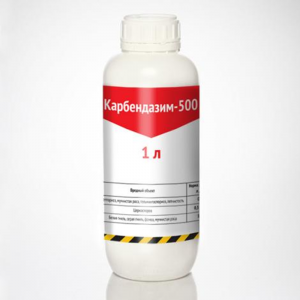Tomatoes are a popular vegetable but are susceptible to a variety of diseases. Understanding these diseases and taking effective control measures is an important step in ensuring healthy tomato growth. In this article, we will introduce in detail the common diseases of tomato and their control methods, and explain some related technical terms.
Tomato Bacterial Spot
Tomato bacterial Spot is caused by the bacterium Xanthomonas campestris pv. vesicatoria and mainly affects leaves and fruit. In the early stages of the disease, small watery spots appear on the leaves. As the disease progresses, the spots gradually turn black and a yellow halo forms around them. In severe cases, the leaves will dry up and fall off, and black spots will appear on the surface of the fruit, leading to fruit rot and affecting yield and quality.
Transmission pathway:
The disease is spread by rain, irrigation water, wind and insects, but also by contaminated tools and human activities. The pathogen overwinters in disease residue and soil and reinfects plants in the spring when conditions are favorable.
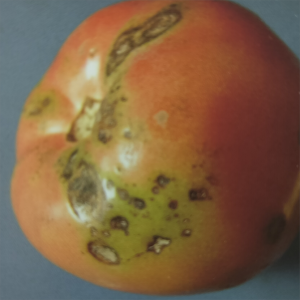 Tomato Bacterial Spot
Tomato Bacterial Spot
Recommended Pharmaceutical Ingredients and Treatment Options:
Copper-based fungicides: e.g., copper hydroxide or Bordeaux solution, sprayed every 7-10 days. Copper preparations are effective in inhibiting the reproduction and spread of bacteria.
Streptomycin: Spray every 10 days, especially in the early stages of the disease, Streptomycin inhibits bacterial activity and slows disease development.
Xanthomonas campestris pv. vesicatoria
Xanthomonas campestris pv. vesicatoria is a bacterium that causes spotted wilt of tomatoes and peppers. It is spread by rain splash or mechanical transmission and infests the leaves and fruits of the plant causing watery spots that gradually turn black and in severe cases cause the leaves to dry out and fall off.
Tomato Root Rot
Tomato root rot is caused by a variety of soil fungi, such as Fusarium spp. and Pythium spp. and mainly infects the roots. At the beginning of the disease, the roots show watery rot, which gradually turns into brown or black color, and finally the whole root system rots. Diseased plants show stagnant growth, yellowing and wilting of leaves, which eventually leads to plant death.
Transmission Pathways:
These pathogens are spread through soil and irrigation water and prefer to multiply in high humidity and high temperature conditions. Infected soil and water sources are the primary means of transmission, and the pathogens can also be spread by tools, seeds and plant residue.
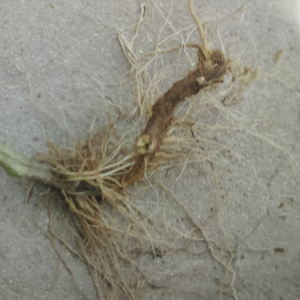
Tomato Root Rot
Recommended pharmaceutical ingredients and treatment program:
Metalaxyl: Spray every 10 days, especially during periods of high disease incidence.Metalaxyl is effective against root rot caused by Pythium spp.
Carbendazim: It is effective against a variety of soil fungi, and can be used to treat the soil before transplanting or sprayed at the early stage of the disease.Carbendazim has a broad-spectrum fungicidal effect, and is effective in controlling the root rot caused by Fusarium spp.
Fusarium spp.
Fusarium spp. refers to a group of fungi in the genus Fusarium that cause a variety of plant diseases, including tomato root and stem rot. They spread through the soil and water, infecting the roots and stem base of the plant, resulting in browning and rotting of the tissues, wilting of the plant, and even death.
Pythium spp.
Pythium spp. refers to a group of water molds in the genus Pythium, and these pathogens usually colonize moist and overwatered environments. They cause tomato root rot that results in browning and rotting of the roots and stagnant or dead plants.
Tomato Gray mold
Tomato Gray mold is caused by the fungus Botrytis cinerea, which occurs mainly in humid environments. At the beginning of the disease, watery spots appear on the fruit, stems and leaves, which are gradually covered with a layer of gray mold. In severe cases, the fruit rots and falls off, and the stems and leaves turn brown and rot.
Route of transmission:
The fungus is spread by wind, rain, and contact, and prefers to reproduce in moist, cool environments. The fungus overwinters on plant debris and reinfects the plant in the spring when conditions are favorable.
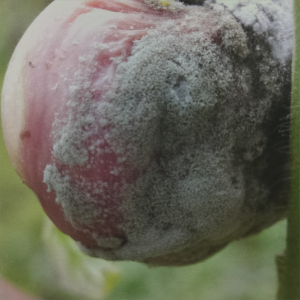
Tomato gray mold
Recommended Pharmaceutical Ingredients and Treatment Options:
Carbendazim: Spray every 10 days for broad-spectrum fungicidal action.Carbendazim is effective against gray mold and can effectively inhibit the spread of the disease.
Iprodione: sprayed every 7-10 days, it has better control effect on gray mold. Iprodione can effectively control the development of the disease and reduce fruit rot.
Botrytis cinerea
Botrytis cinerea is a fungus that causes gray mold and widely affects a variety of plants. It multiplies rapidly in moist environments, forming a gray mold layer that primarily infects fruits, flowers, and leaves, resulting in fruit rot and impaired overall plant health.
Tomato Gray Leaf Spot
Tomato gray leaf spot is caused by the fungus Stemphylium solani. At the beginning of the disease, small gray-brown spots appear on the leaves, the edge of the spots is obvious, gradually expanding, the center of the spots become dry, and finally lead to leaf loss. In severe cases, the plant’s photosynthesis is blocked, growth is stagnant, and yields decline.
Transmission pathway:
The pathogen is spread by wind, rain and contact and prefers to reproduce in moist and warm environments. The pathogen overwinters in plant debris and soil and reinfects plants in the spring when conditions are favorable.
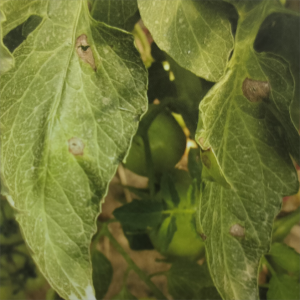
Tomato Gray Leaf Spot
Recommended Pharmaceutical Ingredients and Treatment Options:
Mancozeb: Spray every 7-10 days for effective prevention and treatment of gray leaf spot.Mancozeb is a multi-functional fungicide that effectively inhibits the propagation of the disease.
Thiophanate-methyl: Spray every 10 days, with strong bactericidal effect. thiophanate-methyl has significant effect on gray leaf spot, can effectively control the development of the disease.
Stemphylium solani
Stemphylium solani is a fungus that causes gray leaf spot on tomato. The fungus forms gray-brown spots on the leaves, with distinct edges of the spots, and gradually expands to cause the leaves to fall off, severely affecting the photosynthesis and healthy growth of the plant.
Tomato stem rot
Tomato stem rot is caused by the fungus Fusarium oxysporum, which mainly infects the base of the stem. At the beginning of the disease, brown spots appear at the base of the stem, gradually expanding and rotting, resulting in blackening and wilting at the base of the stem. In severe cases, the plant wilts and dies.
Transmission pathway:
The pathogen is spread through soil and irrigation water and prefers to reproduce under high temperature and high humidity conditions. Infected soil and water sources are the primary means of transmission, and the pathogen can also be spread by seeds, tools and plant debris.
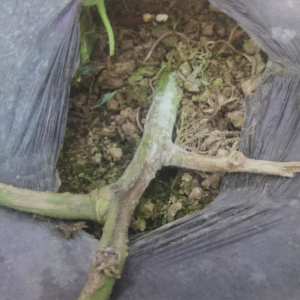
Tomato stem rot
Recommended pharmaceutical ingredients and treatment program:
Metalaxyl: Spray every 7-10 days, especially during periods of high disease incidence.Metalaxyl is highly effective against stem basal rot.
Carbendazim: It is effective against Fusarium oxysporum, especially in the early stages of the disease.
Fusarium oxysporum
Fusarium oxysporum is a fungus that causes tomato stem rot. It spreads through the soil and water and infects the roots and stem base of the plant, causing the tissue to turn brown and rot, and causing wilting and death of the plant.
Tomato stem blight
Tomato stem canker is caused by the fungus Didymella lycopersici, mainly infecting the stem. At the beginning of the disease, dark brown patches appear on the stems, which gradually expand and cause the stems to dry up. In severe cases, the stems crack and plant growth is impeded, eventually leading to plant death.
Transmission pathway:
The pathogen is spread through soil, plant debris and wind and rain, preferring to reproduce in moist and cool environments. The pathogen overwinters in diseased debris and reinfects plants in the spring when conditions are favorable.
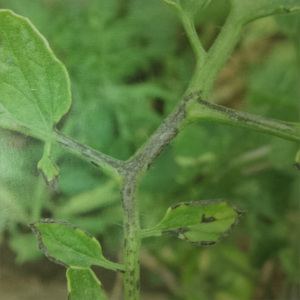
Tomato stem blight
Recommended Pharmaceutical Ingredients and Treatment Options:
Thiophanate-methyl: spray every 10 days for effective control of stem blight.Thiophanate-methyl inhibits the spread and multiplication of the disease and reduces the incidence of the disease.
Carbendazim: It has good bactericidal effect and can be used at the early stage of the disease. carbendazim has significant effect on stem blight and can effectively control the development of the disease.
Didymella lycopersici
Didymella lycopersici is a fungus that causes tomato stem blight. It mainly infects the stems, causing dark brown patches to appear on the stems and gradually drying them out, severely affecting water and nutrient transportation of the plant, and eventually leading to plant death.
Tomato late blight
Tomato late blight is caused by Phytophthora infestans and often breaks out in moist, cool environments. The disease begins with dark green, watery spots on the leaves, which quickly expand and cause the entire leaf to die. Similar spots appear on the fruit and gradually rot.
Transmission route:
The pathogen is spread by wind, rain and contact, and prefers to reproduce in moist, cool conditions. The pathogen overwinters in plant debris and reinfects the plant in the spring when conditions are favorable.
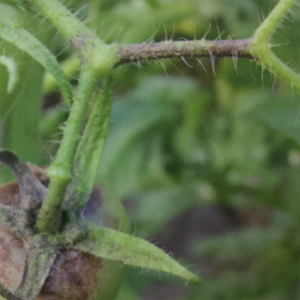
Tomato late blight
Recommended Components and Treatment Options:
Metalaxyl: Spray every 7-10 days to effectively prevent late blight. metalaxyl inhibits the propagation of the disease and reduces the incidence of the disease.
Dimethomorph: Spray every 10 days for good control of late blight. dimethomorph can effectively control the development of the disease and reduce fruit rot.
Phytophthora infestans
Phytophthora infestans is a pathogen that causes late blight on tomatoes and potatoes. It is a water mold that prefers moist and cool conditions, causing dark green, watery spots on leaves and fruits that spread rapidly and cause plant dieback.
Tomato leaf mold
Tomato leaf mold is caused by the fungus Cladosporium fulvum and occurs mainly in humid environments. At the beginning of the disease, gray-green mold appears on the back of the leaves, and there are yellow spots on the front of the leaves. As the disease develops, the mold layer gradually expands, causing the leaves to turn yellow and fall off.
Transmission pathway:
The pathogen is spread by wind, rain and contact, and prefers to reproduce in moist and warm environments. The pathogen overwinters in plant debris and reinfects the plant in the spring when conditions are favorable.
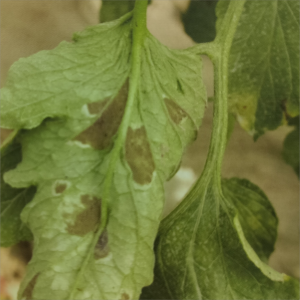
Tomato leaf mold
Recommended Pharmaceutical Ingredients and Treatment Options:
Chlorothalonil: Spray every 7-10 days for effective control of leaf mold Chlorothalonil is a broad-spectrum fungicide that inhibits the propagation and spread of the disease.
Thiophanate-methyl: Spray every 10 days for effective control of leaf mold. thiophanate-methyl is effective in controlling the development of the disease and reducing leaf loss.
Through the use of scientific and reasonable agents and management measures, tomato diseases can be effectively controlled and prevented to ensure the healthy growth of tomato plants, improve yield and quality.
Cladosporium fulvum
Cladosporium fulvum is a fungus that causes tomato leaf mold. The fungus multiplies rapidly under humid conditions and infects leaves, resulting in gray-green mold on the underside of the leaves and yellow spots on the front of the leaves, leading to leaf abscission in severe cases.
Post time: Jun-28-2024



